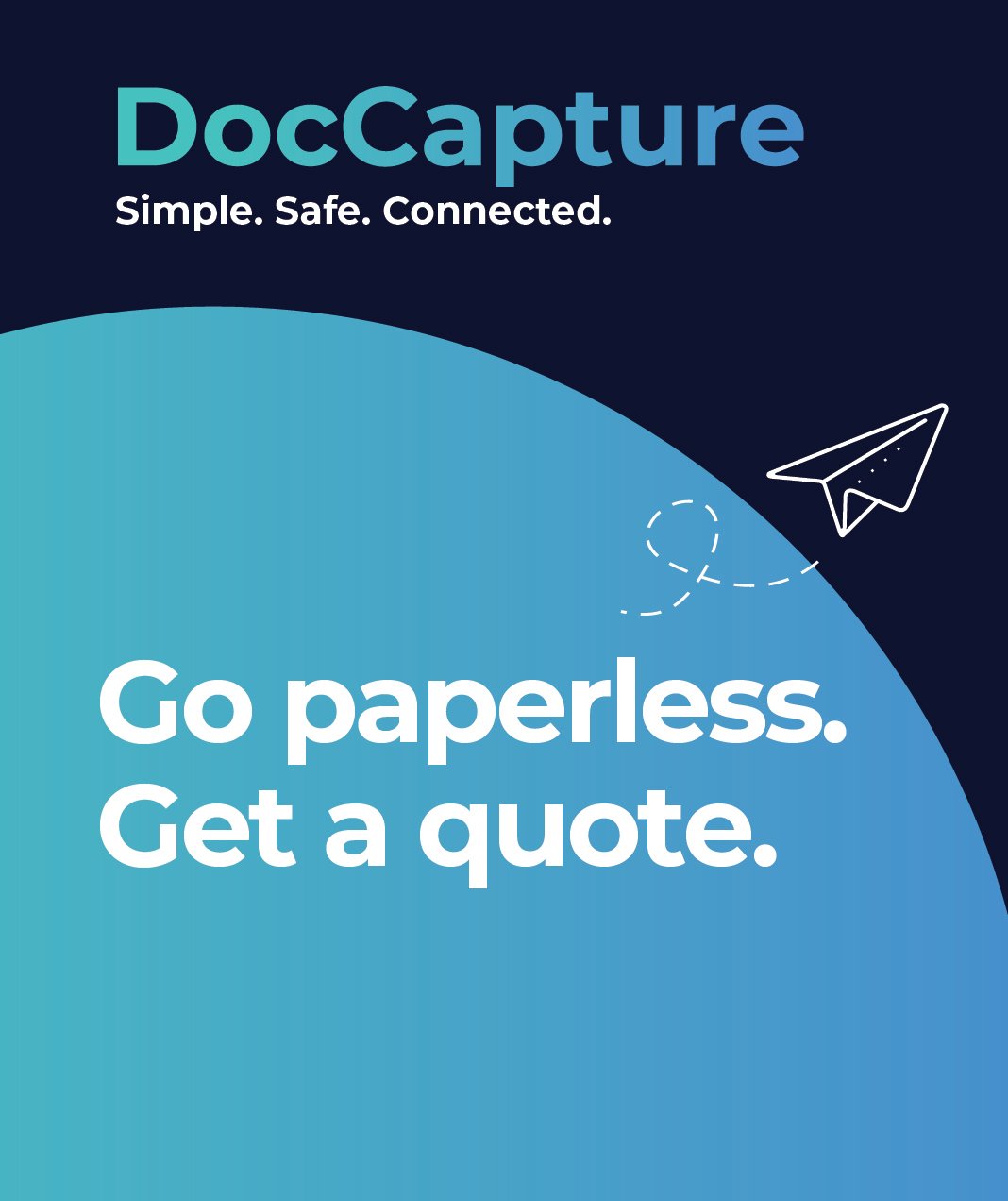Healthcare Document Management: Improve Patient Care & Compliance
Table of contents
In the modern healthcare landscape, data is both an asset and a challenge. For enterprise healthcare and insurance organizations, managing mountains of patient records, claims forms, and compliance documents manually is no longer sustainable. As regulations tighten and expectations for quality patient care grow, so does the need for streamlined, secure, and compliant healthcare document management systems.
Manual processes are prone to error, costly delays, and compliance risks—factors that weigh heavily on health information managers, IT directors, and senior operational leaders. Fortunately, digital document management offers a smarter path forward. By digitizing records and integrating them into electronic medical systems, organizations can improve access to critical information, support HIPAA compliance, and ultimately enhance patient care while controlling costs.
In this article, we’ll explore the real-world challenges and opportunities associated with healthcare document management, highlighting how modern digital solutions are reshaping the way large healthcare organizations operate.
The Challenges of Manual Healthcare Document Management
Despite advances in health IT, many enterprise healthcare organizations still rely on paper-based systems or fragmented digital tools for managing critical documents. This reliance creates a host of operational challenges that directly impact compliance, patient care, and organizational efficiency.
Risk of Human Error and Inefficiencies
Paper-based processes are inherently vulnerable to misfiling, duplication, and loss. Staff may spend hours searching for misplaced records, and outdated filing systems often result in redundant data entry. These inefficiencies slow down patient care, increase labor costs, and hinder the organization’s ability to scale.
Compliance and Regulatory Risks
Healthcare providers face strict regulatory oversight under HIPAA, HITECH, and other federal or state-specific laws. Manual document handling makes it difficult to ensure audit trails, track access, or maintain consistent document security. Failure to comply with these regulations can lead to hefty fines and reputational damage.
Limited Accessibility and Data Silos
When records are stored in filing cabinets or across disconnected systems, authorized personnel may struggle to access patient data when they need it most. This delay can negatively affect diagnosis, treatment decisions, and the overall patient experience.
To overcome these challenges, healthcare organizations are increasingly turning to digital transformation strategies—starting with medical document scanning. Learn more about how DocCapture supports this essential first step on our Medical Document Scanning page.
How Digital Solutions Streamline Compliance with HIPAA and Other Healthcare Regulations
In a compliance-driven industry like healthcare, managing sensitive patient data is not just an operational task—it's a legal obligation. Digital healthcare document management systems offer built-in tools that help enterprise organizations meet regulatory requirements with greater consistency and less manual effort.
Automated Audit Trails and Access Control
One of the key benefits of digital systems is their ability to automatically log every access, edit, or transfer of a document. This creates a clear, traceable audit trail that satisfies HIPAA's data protection requirements. Role-based access control ensures that only authorized personnel can view or modify sensitive documents, further minimizing the risk of data breaches.
Faster Response to Audits and Legal Requests
Digital archives allow healthcare organizations to respond to audits, legal inquiries, and compliance reviews with greater speed and accuracy. Instead of digging through file cabinets or fragmented digital folders, compliance officers can locate and compile the necessary records in minutes.
Secure Data Encryption and Storage
Modern document management solutions use enterprise-grade encryption to protect data in transit and at rest. This ensures compliance with HIPAA’s physical and technical safeguard requirements. Documents stored in secure, cloud-based systems are also backed up regularly, reducing the risk of data loss.
By adopting secure scanning and indexing practices, organizations can create compliant, easily searchable digital archives. Discover how DocCapture can help you stay audit-ready with our Medical Records Scanning and Medical Records Scanning Resources.
Improved Accessibility and Accuracy of Patient Records
Timely access to accurate patient information is crucial for delivering high-quality care. Digital healthcare document management systems help eliminate the delays and errors common with paper records, improving both clinical and administrative outcomes.
Real-Time Access Across Departments
With digitized documents stored in a centralized system, authorized personnel across departments—from physicians to billing teams—can access patient information in real time. This eliminates the need for redundant communication or manual transfers, which often cause treatment delays and frustration for both staff and patients.
Reduced Errors and Redundant Data Entry
Manual transcription and duplication of records create room for error. With digital document scanning and indexing, healthcare organizations can extract data directly from scanned records and automatically populate electronic medical systems. This reduces the risk of incorrect entries, improving the accuracy of patient histories, diagnoses, and billing details.
Enhanced Collaboration and Continuity of Care
Interdisciplinary care teams can work more efficiently when everyone has access to the same up-to-date patient data. This supports smoother handoffs between providers and contributes to better outcomes through coordinated care efforts.
Ready to modernize your patient data systems? Explore how DocCapture helps healthcare organizations bridge the gap between physical records and digital systems with Scanning Medical Records and Scanning Medical Records into EMR services.
The Role of Document Scanning in Integrating with EMRs/EHRs
Enterprise healthcare organizations often face a significant challenge when trying to merge historical paper records with modern digital platforms. Document scanning plays a pivotal role in ensuring that legacy patient information is not lost but instead becomes a valuable part of the organization’s healthcare document management strategy.
Bridging Paper and Digital Systems
By digitizing physical records and indexing them properly, organizations can import this information into Electronic Medical Records (EMR) or Electronic Health Records (EHR) systems. This process allows healthcare providers to retain a complete view of each patient’s medical history—essential for accurate diagnoses and informed treatment decisions.
Seamless Integration with Existing Infrastructure
Modern scanning solutions are designed to integrate with a wide range of EMR/EHR platforms. Once scanned and categorized, documents can be imported into digital workflows without disrupting current systems. This reduces downtime and eliminates the need for dual record-keeping, enhancing productivity across departments.
Supporting Interoperability and Compliance
Standardized digital formats used in document scanning improve interoperability between healthcare providers, payers, and third-party partners. This not only supports better collaboration but also helps maintain compliance with data-sharing standards and privacy regulations.
See how your organization can make the transition with confidence by visiting DocCapture’s dedicated services for Scanning Medical Records into EMR and Medical Document Scanning.
Cost Savings and Efficiency Gains from Reducing Paperwork and Administrative Workload
Managing healthcare documents manually isn’t just inefficient—it’s expensive. From storage space to labor hours, paper-based systems drain both time and budget. Implementing a digital healthcare document management solution can lead to immediate and long-term cost savings while empowering staff to focus on higher-value tasks.
Reduced Physical Storage Costs
Large healthcare organizations often maintain entire rooms or offsite facilities just to store patient files. Scanning and digitizing these records eliminates the need for physical storage, saving thousands annually in rent, maintenance, and supplies.
Streamlined Administrative Processes
Manual filing, retrieval, and duplication of documents consume a significant portion of administrative staff time. With digital workflows, tasks like data entry, record requests, and chart audits are handled automatically, freeing up staff for more strategic or patient-facing responsibilities.
Faster Claim Processing and Fewer Errors
Accurate documentation and quick access to records are critical for submitting insurance claims. Digitized records reduce the chances of missing information or errors that cause claim denials. This leads to faster reimbursements and fewer administrative follow-ups.
Long-Term ROI
Though the upfront investment in document scanning and management systems can be significant, the return on investment is substantial. Reduced labor costs, fewer compliance penalties, and increased operational efficiency all contribute to long-term savings.
Looking to cut costs without cutting corners? Learn more about how DocCapture supports efficiency through Medical Records Scanning and Scanning Medical Records.
Addressing Common Objections: Security, Downtime, and Integration with Legacy Systems
Despite the clear benefits of digital healthcare document management, enterprise healthcare leaders often hesitate due to perceived risks around data security, operational downtime, and compatibility with existing systems. Addressing these concerns directly is critical to successful adoption.
Objection: “Is It Secure?”
Security is a top priority for any healthcare organization. Modern document scanning and management solutions follow strict protocols to protect data both in transit and at rest. Encryption, user authentication, access controls, and audit trails ensure that patient information remains safe and HIPAA-compliant throughout the entire process. Trusted providers like DocCapture adhere to industry best practices and conduct regular security assessments to prevent breaches.
Objection: “Will It Cause Downtime?”
Many CIOs and IT directors worry that digitization will interrupt operations. However, scanning projects are typically staged to avoid disruptions. DocCapture, for example, works with clients to create phased rollout plans, often scanning records in batches during off-hours or non-peak times. This ensures continuity of care while transitioning to a more efficient system.
Objection: “What About My Legacy Systems?”
Enterprise healthcare organizations often operate on a mix of legacy software and infrastructure. DocCapture’s solutions are designed for compatibility and flexibility, ensuring scanned documents can integrate seamlessly into existing EMR/EHR platforms. Whether you’re running a cloud-based system or an on-premise solution, document management tools can be customized to fit your architecture.
Learn how other healthcare organizations have overcome these concerns by exploring DocCapture’s resources on Medical Records Scanning and Scanning Medical Records into EMR.
Conclusion
As healthcare organizations grow in size and complexity, the need for secure, compliant, and efficient healthcare document management has never been greater. From minimizing compliance risks and administrative costs to improving patient outcomes and audit readiness, the advantages of going digital are undeniable.
Document scanning and digital record integration are more than just IT upgrades—they are foundational shifts that support long-term organizational health. Whether you're navigating a regulatory overhaul or simply trying to modernize your document workflows, DocCapture provides the tools, expertise, and support to make it happen seamlessly.
Ready to take the next step? Fill out our “get a quote” form today and see how DocCapture can help your organization transform its document management strategy with confidence.
Share this
You May Also Like
These Related Stories

Leveraging Document Scanning for Better Compliance in Healthcare

Digital Transformation in Healthcare: The Role of Document Scanning

